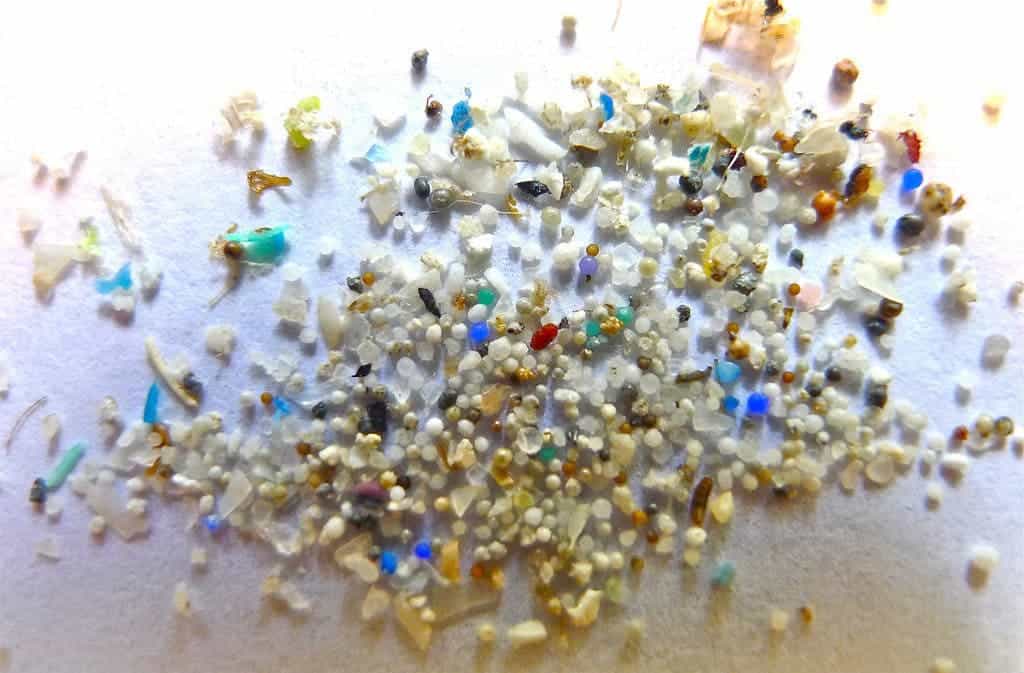Scientists may have found a replacement for one of society’s notorious pollutants: microbeads.

Somewhere on the long list of ways through which we’re harming the planet, microbeads have snuck in as one of the surprising culprits. You wouldn’t think that something as inconspicuous as very small beads of plastic can do such a great deal of damage — but they do. Microplastics are used a lot in the cosmetic industry, especially in scrubs and cleaners. You’ll often find them in products such as toothpaste or facial cleansers. Microbeads don’t really biodegrade, and they tend to be gobbled up by unsuspecting fish. The fish aren’t able to digest or eliminate them, and so they just get stuck inside the fishes’ digestive system, where they can cause massive harm, or even kill the fish. To make things even worse, microbeads also get passed up the food chain, so you’ll find even more of them in predators higher up the food chain.
To put it bluntly, microbeads have got to go.
Illinois became the first US state to ban their usage in 2014, with California soon following suit just a year later. Former President Obama passed a law banning microbeads across the country, but their usage is still permitted in many products. Other countries like Canada are also taking action, but the process is slow and faces massive opposition. This is why researchers are trying to find a substitute.
The problem with replacing microbeads is that they’re cheap and effective at what they do.
“Microbeads used in the cosmetics industry are often made of polyethylene or polypropylene, which are cheap and easy to make,” Dr. Janet Scott said in a statement. Scott is a reader in the Department of Chemistry at the University of Bath and an author on the study. “However these polymers are derived from oil and they take hundreds of years to break down in the environment.”
She and her colleagues have developed biodegradable microbeads, made from cellulose instead of plastic
Cellulose-based microbeads.
Cellulose is a plant fiber which gives trees and other plants their distinctive structure. It doesn’t exhibit many of the properties plastic can boast, but it’s a very robust material which can be used and modified in a number of ways.
For this purpose, Scott dissolved cellulose and then dripped tiny droplets of it onto ethanol, hardening them into small beads. This type of process is also used in the fabrication of spherical caviar. The result they ended up with is tiny cellulose beads, which, just like plastic microbeads, can be used for scrubbing and cleansing to great effect. The difference is that unlike plastic, once these cellulose microbeads hit the sewers, they soon start to decompose in an environmentally friendly way.
Other common substitutes, such as ground walnuts, are irregular in shape and can also be too rough on the skin, whereas this is not the case with the cellulose beads.
To make things even sweeter, Scott says they can be fabricated from leftover materials of the paper industry — which would make the beads not only much cheaper, but also even more eco-friendly.
It remains to be seen whether the industry will take a liking to Scott’s proposed solution. Even if they do, it’ll likely be a few years before the cellulose microbeads can hit the shelves. In the meantime, it’s important to avoid products with microbeads. They may be good for your skin, but they’re bad for the environment.
Journal Reference: James Coombs OBrien, Laura Torrente-Murciano, Davide Mattia, and Janet L. Scott — Continuous Production of Cellulose Microbeads via Membrane Emulsification. DOI: 10.1021/acssuschemeng.7b00662


